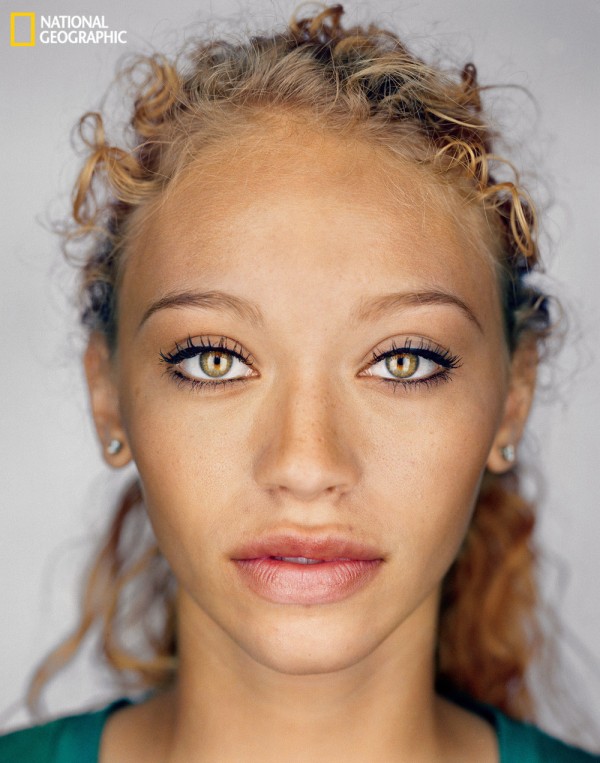NATIONAL GEOGRAPHIC: What is it about the faces on these pages that we find so intriguing? Is it simply that their features disrupt our expectations, that we’re not used to seeing those eyes with that hair, that nose above those lips? Our responses can range from the armchair anthropologist’s benign desire to unravel ancestries and find common ground to active revulsion at group boundaries being violated or, in the language of racist days past, “watered down.” Out in the world, the more curious (or less polite) among us might approach, asking, “Where are you from?” or “What are you?” We look and wonder because what we see—and our curiosity—speaks volumes about our country’s past, its present, and the promise and peril of its future. The U.S. Census Bureau has collected detailed data on multiracial people only since 2000, when it first allowed respondents to check off more than one race, and 6.8 million people chose to do so. Ten years later that number jumped by 32 percent, making it one of the fastest growing categories. The multiple-race option has been lauded as progress by individuals frustrated by the limitations of the racial categories established in the late 18th century by German scientist Johann Friedrich Blumenbach, who divided humans into five “natural varieties” of red, yellow, brown, black, and white. Although the multiple-race option is still rooted in that taxonomy, it introduces the factor of self-determination. It’s a step toward fixing a categorization system that, paradoxically, is both erroneous (since geneticists have demonstrated that race is biologically not a reality) and essential (since living with race and racism is). The tracking of race is used both to enforce antidiscrimination laws and to identify health issues specific to certain populations. The Census Bureau is aware that its racial categories are flawed instruments, disavowing any intention “to define race biologically, anthropologically, or genetically.” And indeed, for most multiple-race Americans, including the people pictured here, identity is a highly nuanced concept, influenced by politics, religion, history, and geography, as well as by how the person believes the answer will be used. MORE

